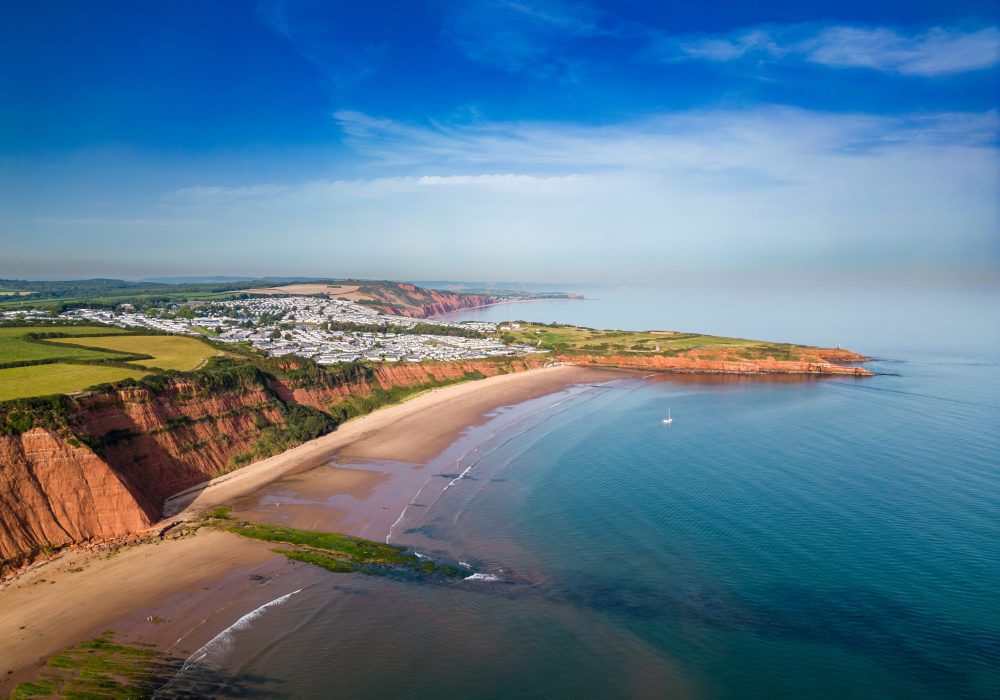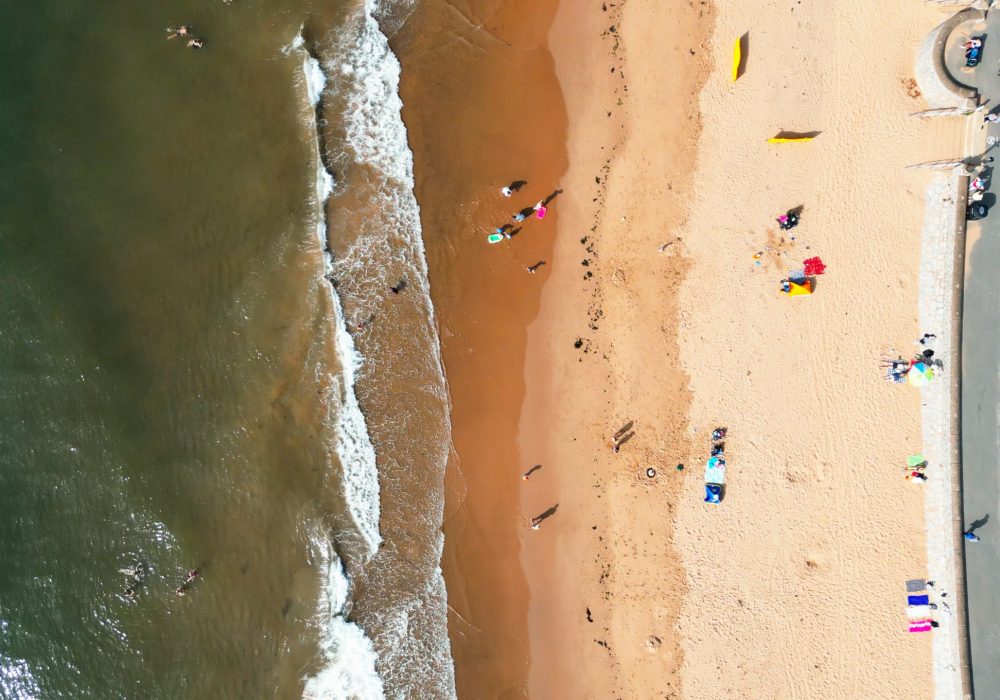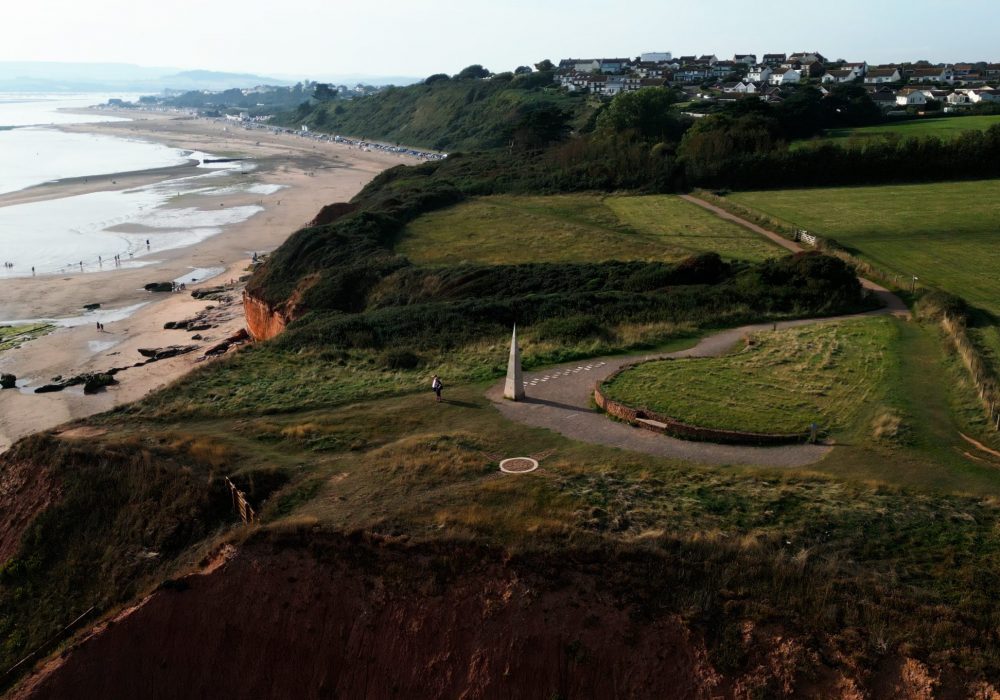📍15 The Beacon, Exmouth EX8 2AG
This location was home of LT Richard Sandford VC RN who was awarded the VC for conspicuous bravery for commanding the submarine C3 on the St George’s Day raid on Zeebrugge in April 1918. He and his crew ran this explosive-filled vessel aground where it later exploded and breached the viaduct. He survived and escaped with wounds, however he died of typhoid a few months later on 23rd November 1918.
📍1 Execliff, Trefusis Terrace, EX8 2AX
From 1861 – 1877 this location was the home of Admiral of the Fleet Sir Fairfax Moresby G.C.B., D.C.L. At the age of 13 he joined the navy and was on the Mauritius Station which played a part in suppressing the slave trade on the East African coast where he earned Wilberforce’s gratitude. In 1853 he devised the flag communication code used into the 20th century and Port Moresby in New Guinea was named after him.
📍The Assembly Rooms, The Beacon, Exmouth EX8 2AG
Built in 1794, The Assembly Rooms was one of the first properties on the Beacon Fields and was the centre of social life throughout the Napoleonic Wars.
📍The Barn Hotel, Foxholes Hill, EX8 2DF
Designed by architect Edward Prior in 1896 as a house, The Barn Hotel was an important building in the Arts and Crafts movement and might be the first example of the ‘Butterfly’ plan for a dwelling in Europe. This building was constructed of local sandstone interspersed with large sea-rounded pebbles and granite capped chimneys. It was also originally thatched with Slapton reed before a fire in 1905 caused the roof to be rebuilt with slate.
📍Beacon Hill House, The Beacon, EX8 2AG
Built circa 1820 as the home of Richard Perring, formerly Clark of the Cheque at Sheerness and Plymouth Dockyards. He was the inventor of an improved manufacturing technique for anchors used extensively by the Royal Navy.
📍Byron Court, The Beacon, EX8 2AG
In 1815 Lord Byron, a famous English poet, married Anne Isabella Milbanke, but in 1823 he left Lady Byron and their daughter, Ada, who then lived in this house. Ada later became the Countess of Lovelace and achieved fame by assisting Charles Babbage, the pioneer of modern computing. The universal computer programming language ADA was name after her in her honour.
📍Chester House, Imperial Road, EX8 1DB
Formerly named Manchester House, Chester House was the home of Mary Ann Clarke, the notorious mistress of the Duke of York, brother of the Prince Regent. She lived here in 1804 and sold appointments in the army with the alleged connivance of the Duke. Whilst in Exmouth she lived a luxurious life but died in Paris in 1813.
📍The Merchant Inn, The Strand, EX8 1AQ
The plaque here recognises The Clipper, formerly East India House. In the late 18th century the site was used as a tea warehouse by the East India Company. They used the route from Exmouth to London by coach and horse as it was quicker than passing through Bristol. After 1819, the premise became a high class grocer’s shop and in 1955, the premise become Leonard’s Bar.
📍Exeter Road, EX8 1QG
Formerly the Manor House of Rill (or Hill), a sub-manor or Marpool, this building was home to Sir John Colleton in the early 18th century. He was a retired administrator of South Carolina and bought the first magnolias with him, which he developed by mutation to produce the ‘Magnolia Graniflora Exmouthiensis’ variation. Interestingly, this flower is incorporated into the Exmouth Coat of Arms.
📍Trefusis Terrace, EX8 2AX
A blue plaque here commemorates renowned landscape artist, Francis Danby, who came to Exmouth in 1841. His work was very much influenced by the sunsets at the Exe Estuary. He lived at the now demolished Shell House, which was situated in the cricket field at this location.
📍Chapel Hill, EX8 1NS
The premise of the Exmouth Chronicle was once housed here in an Art Deco property in 1939. The Delderfield Family ran the newspaper from 1925 until it closed in 1962. Their son Ron achieved fame for writing books and plays which were later turned into films and TV shows, whilst the second son Eric wrote a number of local history books.
📍 Doldorgan Court, Louisa Terrace, EX8 2AQ
Charlotte Anne Hume Long, known as ‘Lady Bountiful’ lived here. In 1884 she started and was the matron of the hospital on Clarence Road. Two years later she founded the Maud Hospital and Hope Orphanage on Bicton Street. When she died in 1899 her son continued her legacy and created the Exmouth Hospital.
📍Dolphin Hotel, 2 Morton Road, EX8 1BA
Sub Lt R Warneford was awarded VC for conspicuous bravery when he flew a single engine aircraft which dropped bombs and destroyed a German Zeppelin airship over Belgium on 7th June 1915.
📍Ebenezer House, Little Bicton Place, EX8 2SS
Ex-members of Glenorechy Church began to worship in this house which belonged to their Elder, Richard Staple, and it became known as ’The Little Revenge’. The adjacent coach houses were turned into a chapel which stood until 1893. In that year it was rebuilt to its present form; the cottage became the Manse and later a Sunday school. The chapel closed in the mid 20th century following the reconciliation with Glenorchy Church.
📍Mamhead View, EX8 1DS
The first section of the sea wall was completed in 1845 at the expense of Lorde John Rolle, which enabled the development of the town as a holiday resort. It measured 1,900 feet in length and was constructed of Devon limestone. It’s designer, John Smeaton, worked on the Rennie’s London Bridge and later become supervisor-in-chief of the London Dock Company.
📍Glenorchy Church, Exeter Road, EX8 1PL
The original Glenorchy Chapel was founded by Willielma, Viscountess Glenorchy in 1777 following a visit to the town in the previous year. The present church was built in 1866 superseding the earlier chapel on this site.
📍The Strand, EX8 1HE
Throughout much of the 18th and 19th century, The Globe Hotel stood on this site. It was a posting house and also where a frequent coach service left for Exeter and Salterton. The hotel’s ballroom was the centre of various activities such as banquets, sessional courts, theatre shows and the original non-conformist meeting in Exmouth in 1766. The hotel was demolished in 1866 to make way for the construction of Rolle Street.
📍Gun Cliff Gardens Carlton Hill, EX8 2BB
These gardens are thought to be the first look-out station at the mouth of the river in the Roman era. Since then the narrow channel opposite what is known as Gun Cliff Gardens, has been well defended. In the Civil War the site was garrisoned to prevent seaborne relief to the besieged Royalists in Exeter. During the mid 19th century the Gun Cliff field formed gardens to the Trefusis Terrace houses. The Devon Volunteer Artillery established a replacement battery on the beach, just 100 yards from the site in 1862, the foundations can sometime be seen beneath the sands.
📍On the corner of Lime Kiln Lane and Douglas Avenue, EX8 2EY
This ancient lane (also known as Watery Lane) is named after the route to the 18th century lime kiln situated on the present Maer. The lane was used by smugglers to take contraband from Orcombe to Mutter’s cider shop, which used to be located on Salterton Road. Mutter was a local smuggler after whom Mutter’s Moor was named which was the location of one of his look-out points near Sidmouth.
📍Lower Halsdon Farm, Exe Valley Way, EX8 3EG
Stanley Long gave the 44.5 hectares of farmland at Lower Halsdon to the National Trust in 1995, which was influenced by the wishes of his late wife, his parents and Sir James Garbutt Knott in resisting pressures to sell the land for development. The National Trust preserve the land to allow for the open views across the Exe Estuary, it’s also an important area for migrating birds.
📍Maer Bay Court, Douglas Avenue EX8 2EY
Maer Bay Court was originally built as a home for General Gordon and known originally as Miramar. The general was killed at Khartoum before he was able to occupy the house but it was lived in by his sister. During the time it was a hotel it was frequently visited by author Vera Brittain.
📍Manor Hotel, The Beacon, EX8 2AG
As it’s known now, the Manor Hotel was one of the first properties built on The Beacon in the early 1790s. It was originally known as The Beacon Hotel and it’s the oldest remaining hotel in Exmouth.
📍Exeter Road, EX8 1PS
Landscape artist Conrad Martens moved to Exmouth in 1822 from London where he lived at Elm Cottage, a former manor house on at this address. From 1833 to 1834 he was an artist on the ship the Beagle and corresponded with Charles Darwin for many years.
📍Exeter Road, EX8 1PN
Here stood the location of Pratteshide (Pratt’s landing place) from where the ancient ferry from Exmouth to Starcross operated for many centuries. Nearby stood Douste’s House, built by Roger Douste prior to 1240 AD where all shipping dues and ferry rents were paid. In the late 19th century the area became known as Mona Island, named after one of the cottages on the site.
📍Nelson House, The Beacon, EX8 2AG
Lady Franes Nelson, nee Woolward, Duchess of Bronte, wife of Admiral Viscount Lord Horatio Nelson lived here during 1803 – 1829 with her son Josiah Nisbet.
📍The Pilot Inn, Tower Street, EX8 1NY
The Church of the Holy Trinity stood opposite from 1412 until 1824. It’s thought that the Inn here was previously called Church House Inn before the 1830s, but then took a new name: the Pilot (or Pilot Boat), the vicar tried to remove the license but lost. A later landlord cut off a troublemaker’s ear in a brawl but escaped jail by getting a local surgeon to sew it back on!
📍 Tower Street, EX8 2AG
This site was the home of Nancy Perraim, who accompanied her husband serving as a powder monkey in the fleet at the time of Nelson. She was at the battles of L’Orient (1795) Cape St Vincent (1797) and the Nile (1798) and died in 1865 at the age of 98 years old.
📍Carlton Hill, EX8 2AJ
Exmouth’s first recipient of the Order of the British Empire was educated in this building when it houses Southsands School.
📍Primrose Cottage, North Street, EX8 1JZ
This building is the last remaining thatched cottage in Exmouth town centre. There has been a dwelling on this site since the early 17th century. It was constructed initially with cob walls but later faced with brick and sandstone. The cottage was at the northern edge of the town well into the latter part of the 19th century closes to the turnpike beyond which were extensive marshes.
📍Royal Beacon Hotel, The Beacon, EX8 2AF
Originally called the Marine Hotel, The Beacon Hotel was built circa 1810. The name change occurred after a short visit by the King of Saxony in 1844.
📍Magnolia Centre, Magnolia Walk, EX8 9BH
On this site stood the 14th century St Margaret Chapel, the first known church in Exmouth, presumably built as a votive chapel by the monks of Sherborne Abbey as a resting place when travelling to their land in Torbay. The building then housed a tailor and a butchers before it was demolished in the mid 1970s to make way for the Magnolia Centre.
📍Chapel Hill, EX8 1NS
This site was a late 18th century building called Temple Winds, erected at the foot of Beacon’s Fields. It was a pharmacy prior to 1830 and remained as such until the 1960s. The name was taken from the Temple of the Winds in Athens.
📍The Strand, EX8 1AH
The Blue Plaque here commemorates the building known at West End House in the 1790s, built as the dower house for the mother of Gustaves Ducarel, the squire of the now demolished Manor House in Manor Gardens. In 1801 Richard Webber bought the house and converted it into a shop, in which the original shop front is incorporated in the present frontage.
📍Withycombe Mill Wheel, Alexandrea Terrace Walkway, EX8 1PB
There have been mills on the Withycombe Brooke for the best part of 1000 years prior to the floods of 1960 when the last mill was demolished after being damaged.
And there we have it, 33 Blue Plaques in Exmouth! There are a number of other plaques and historical signs in Exmouth, including the black Jurassic Coastline plaques at Orcombe Point and the RNLI plaques at the lifeboat station. If you’d like to find out more about the history and heritage of our wonderful town, please click here. Of course, the best way to learn about the history of Exmouth is to walk the streets yourself. Have a meander around the town and see what you can discover about our town’s fascinating history.
Stay up to date with our latest blog posts, competitions and more by signing up to our e-newsletter and following us on Instagram and Facebook.






